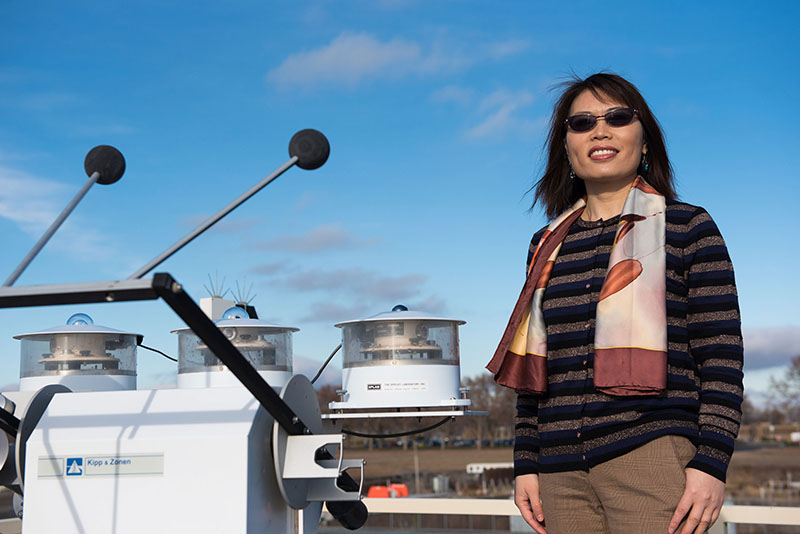New GoAmazon2014/15 Paper Shows That Small Particles Have Large Impact on Storms
Published: 18 February 2018
Research Appears in Issue of Science

More impactful science has emerged from the Green Ocean Amazon (GoAmazon2014/15) campaign managed by the ARM Climate Research Facility.
A new GoAmazon2014/15 paper in the journal Science focuses on the power of aerosols. While scientists have known that aerosols may play an important role in shaping weather and climate, this study shows that the smallest of particles have a big effect: Particles smaller than one-thousandth the width of a human hair can cause storms to intensify, clouds to grow, and more rain to fall.
Long considered too small to have much impact on droplet formation, aerosols are, in effect, diminutive downpour-makers.
“We showed that the presence of these particles is one reason why some storms become so strong and produce so much rain,” says Pacific Northwest National Laboratory atmospheric scientist Jiwen Fan, the paper’s lead author. “In a warm and humid area where atmospheric conditions are otherwise very clean, the intrusion of very small particles can make quite an impact.”
Fan worked with 20 authors from 15 institutions around the world on this paper.
During GoAmazon2014/15, scientists studied the atmosphere above and around Manaus, a heavily developed city of more than 2 million people in central Brazil, during both the wet and dry seasons. This unique research landscape allowed them to investigate an urban environment set in the midst of the near pristine vastness of Amazon rainforest that spans 1,500 kilometers in any direction.
The ARM Climate Research Facility is a DOE Office of Science user facility. The ARM Facility is operated by nine DOE national laboratories, including Pacific Northwest National Laboratory.
Keep up with the Atmospheric Observer
Updates on ARM news, events, and opportunities delivered to your inbox
ARM User Profile
ARM welcomes users from all institutions and nations. A free ARM user account is needed to access ARM data.


















